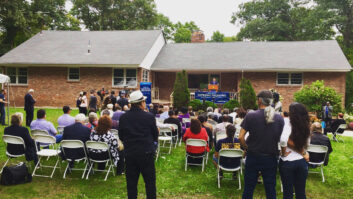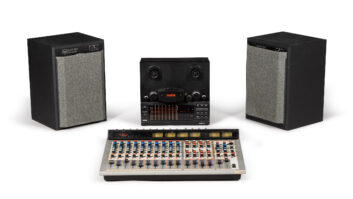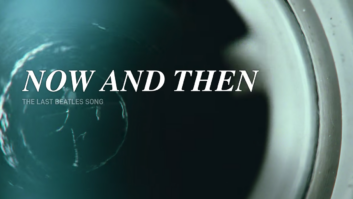Stockton, Calif.’s Bob Hope Theatre, originally opened in 1930 as the Fox Theatre, has been both a live theater and a movie house. The theater, which was rescued from the wrecking ball by Edward C. Merlo and Madeline Lawton, has been declared an historic landmark by the city and the National Register of Historic Places. In 2000, a massive $8.5 million renovation was undertaken, which included the addition of a state-of-the-art sound system (including Meyer’s MILO high-power curvilinear array loudspeaker).
DECK Productions’ Elton Halley designed the system, using the Meyer Sound MAPP Online® acoustical prediction system to help him cope with a number of restrictions based on the building’s historical status, as well as the location and weight limitations of the theater’s rigging points. “I trust my ears,” Halley says, “but I use MAPP to give me a visual representation of what I’m hearing, and it’s never let me down. MAPP gives the designer the ability to have a better understanding of what’s going on. Even people who don’t have an intimate knowledge of acoustics are convinced by seeing a visual display.”
Stephen Jester, the theater’s technical director continues, saying, “MAPP was integral for us in communicating with the city of Stockton the ideas contained in the proposal. Mark Lewis, the city manager, was a major part of the planning process, and we had a pretty high bar to reach in obtaining the city council’s approval. MAPP’s detail went a long way in helping us to achieve that approval.”
The system Halley came up with comprises left and right arrays, each with five MILO high-power curvilinear array loudspeakers and an underhung MILO 120 high-power expanded coverage curvilinear array loudspeaker for down-fill to cover the orchestra area. A pair of 700-HP ultrahigh-power subwoofers are ground-stacked on each side of the stage for low-frequency reinforcement.
Recalls Jester, “I had a chance to see the Rod Stewart tour and was really impressed with the sound of the MILO. The show was divided into two sets—a rock band for his hits and a jazz big band for the standards—and I was knocked out by the versatility of MILO, being able to handle those two extremes so well.”
“We came in after the renovations were completed,” reports Halley. “At that point, there was no way we were going to be able to put in any acoustical treatment. We went in and visually examined the stage, then looked in MAPP to see how a system could work in the room. It’s a very reflective space, with an expansive orchestra area, large balcony and a lot of space under the balcony.”
The depth of the theater’s balcony has traditionally been a selling point and a sonic challenge for the room. “It’s a real challenge to obtain consistent coverage. The rear wall is curved and the mix position is all the way at the back of the house at orchestra level, under the balcony,” Jester explains.
In Halley’s design, each array uses three MILO cabinets driven as three separate zones to cover the balcony, while the remaining two MILO cabinets and the MILO 120 on the bottom of the array cover the orchestra level.
The location of the rigging points also presented a challenge. “They’re placed very far into the house,” explains Jester. “To get the splay we needed, Elton suggested putting three MILOs on top to hit the three sections of the balcony. Then we dropped the bottom three cabinets to a much higher degree so we weren’t hitting the rail or any portion of the back wall.”
“With the control MILOs offer and Meyer’s QuickFly rigging system, we were able to get much more of a tilt and obtain the coverage we needed to shoot all the way to the back under the balcony,” Halley adds. “MILO’s control and directivity helped to keep things off the side walls, but gave us the horsepower to get up to the top of the balcony. And with the QuickFly system, we were able to drop the MILO 120 down and vastly improve the sound at the mix position.
“It’s great to be able to install one system that can cover so many different types of applications and do it all so well,” Halley concludes. “Especially in this day and age of limited budgets, now even smaller productions can have it all.”
For more information, please visit www.meyersound.com.







